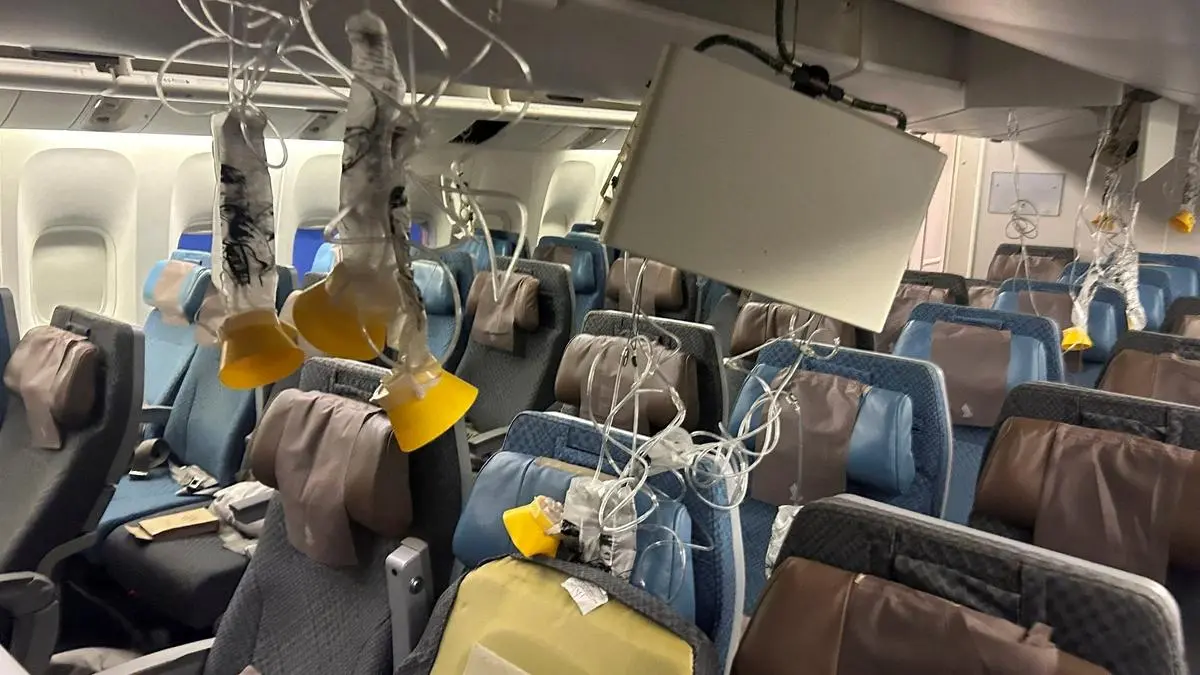About Aircraft Turbulence:
- Turbulence means disruption of airflow over the wings of an airplane, which causes it to enter irregular vertical motion.
- These pockets of disturbed air can have many causes, most obviously the unstable weather patterns that trigger storms.
- There are at least seven kinds of turbulence that an aircraft can run into:
- Wind Shear: It happens when there is a sudden change in wind direction, whether vertically or horizontally. Typically occurs close to thunderstorms, jet streams, etc.; tricky for pilots as tailwinds suddenly change to headwinds or vice versa.
- Frontal: Created in the frontal zone when warm air is lifted by sloping frontal surface and friction between opposing air masses. Most palpable when warm air is moist; intensity increases with thunderstorms. Most common close to thunderstorms.
- Convective: When land surface temperature rises, the air above the ground heats up and rises, creating air pockets around it. Convection currents cause difficulties during approach as they tend to affect the rate of descent.
- Wake: It forms behind an aircraft when it flies through air-creating wingtip vortices.
- Mechanical: This type of turbulence occurs when tall solid objects such as mountains or highrise constructions disrupt the normal airflow, causing the air for planes to fly through to become dirty.
- Clear air: It occurs when an aircraft crosses from one air mass to another, which has a different direction. Clear air turbulence could also happen when an aircraft moves out of a jet stream. Clear air turbulence is mainly caused by wind or jet streams.
- Mountain view: It is one of the most severe; these are oscillations that form on the downwind side of mountains when strong winds flow towards mountains in a perpendicular fashion.
Aircraft tracking perpendicularly across, or downwind of a mountain, may experience sudden loss of altitude followed by a sudden reduction in airspeed.
Q1: What are Jet streams?
Jet Streams are bands of strong wind that generally blow from west to east all across the globe. Earth has four primary jet streams: two polar jet streams, near the north and south poles, and two subtropical jet streams closer to the equator.
Source: What is aircraft turbulence and how common is it? | Explainer
Last updated on January, 2026
→ Check out the latest UPSC Syllabus 2026 here.
→ Join Vajiram & Ravi’s Interview Guidance Programme for expert help to crack your final UPSC stage.
→ UPSC Mains Result 2025 is now out.
→ UPSC Notification 2026 is scheduled to be released on January 14, 2026.
→ UPSC Calendar 2026 has been released.
→ UPSC Prelims 2026 will be conducted on 24th May, 2026 & UPSC Mains 2026 will be conducted on 21st August 2026.
→ The UPSC Selection Process is of 3 stages-Prelims, Mains and Interview.
→ Prepare effectively with Vajiram & Ravi’s UPSC Prelims Test Series 2026 featuring full-length mock tests, detailed solutions, and performance analysis.
→ Enroll in Vajiram & Ravi’s UPSC Mains Test Series 2026 for structured answer writing practice, expert evaluation, and exam-oriented feedback.
→ Join Vajiram & Ravi’s Best UPSC Mentorship Program for personalized guidance, strategy planning, and one-to-one support from experienced mentors.
→ UPSC Result 2024 is released with latest UPSC Marksheet 2024. Check Now!
→ UPSC Toppers List 2024 is released now. Shakti Dubey is UPSC AIR 1 2024 Topper.
→ Also check Best UPSC Coaching in India

















